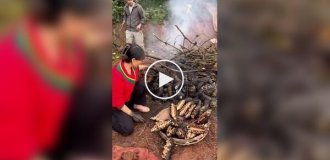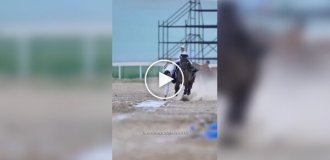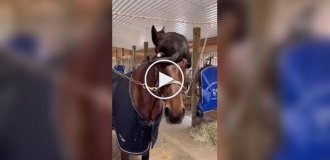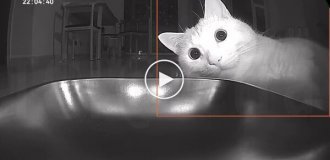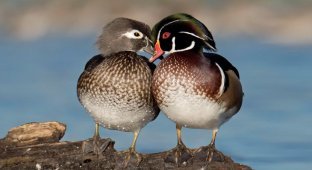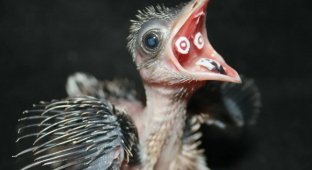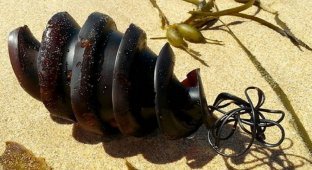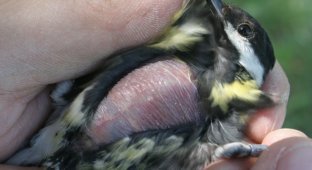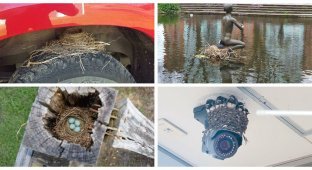Cuckoos have a rather unique approach to parenthood. You will learn all the details in this article. 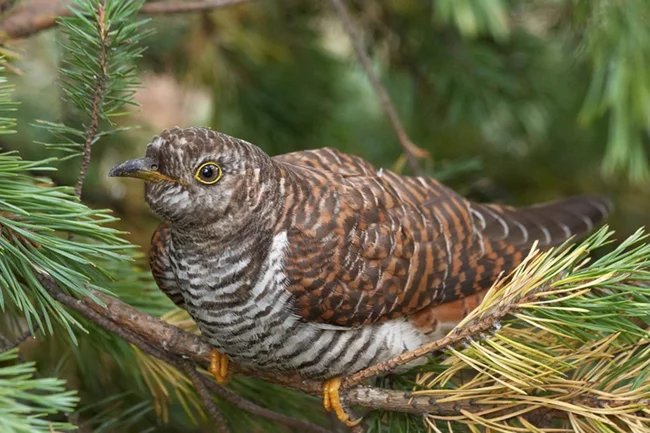
Cuckoos are not the only birds that lay eggs
Scientifically, this behavior is called nest parasitism. More than 300 species of birds lay their babies in other families! Most of them leave eggs in the nests of their relatives: this is done by anseriformes, galliformes, and cranes. Most often, a mother gives her offspring to a foster family when her own nest has been destroyed, but she has not yet laid the entire clutch. It is unrealistic to build a new home for the remaining children, and raising them on bare soil is the same as murder. So the parents look for a new home where their children will be warm and well-fed. 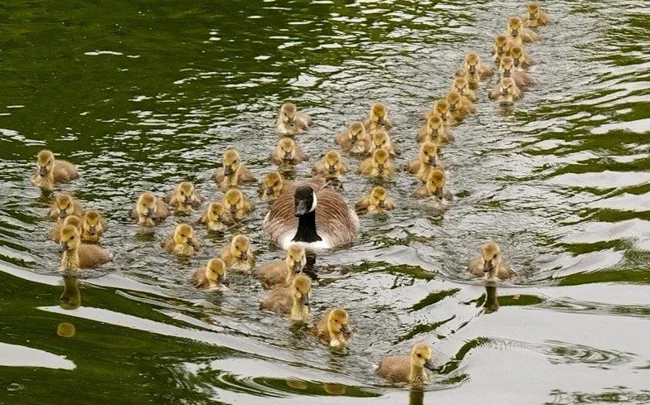
For reference: this is a Canadian goose. The maximum number of eggs that a female can lay is 10. As you can see, this goose has had children thrown to her more than once or twice!
Far fewer birds decide to leave an egg in the nests of other species. There is always a chance that the foundling will be discovered and destroyed. That is why most birds that decided on such a desperate act have learned to disguise their eggs as someone else's clutch. The uniqueness of the cuckoo is that it does not stop at one adoptive species. Among the nannies, it chooses from a list of more than 300 birds! 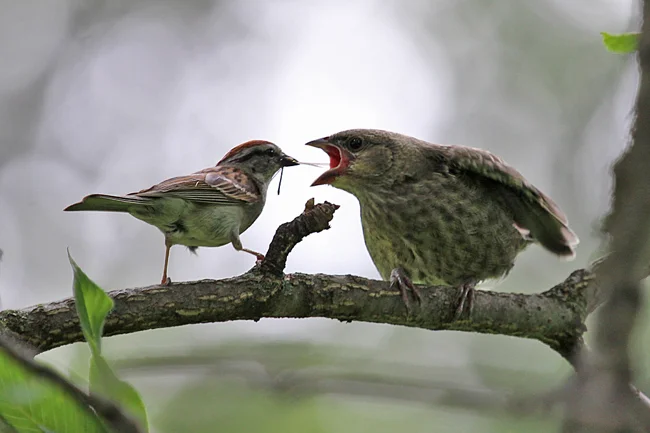
The brown-headed cedar is one of the few species in the New World that has adopted the strategy of the cuckoo. These birds do not get rid of neighboring chicks, they fledge and leave the nest before the rest of the brood.
Why does a cuckoo lay eggs?
One of the main reasons is food! Cuckoos are real vacuum cleaners. They eat everything that is not nailed down. These birds even gobble up poisonous caterpillars, which would at least cause indigestion for other birds. But what does throwing eggs into someone else's nest have to do with it? And given that such an exotic diet is fatal for the cuckoo chick! The chick is not yet capable of eating everything that an adult bird eats. If the cuckoo did not throw her babies to birds whose diet is more delicate, then all the cuckoo chicks would simply die with their own mother! 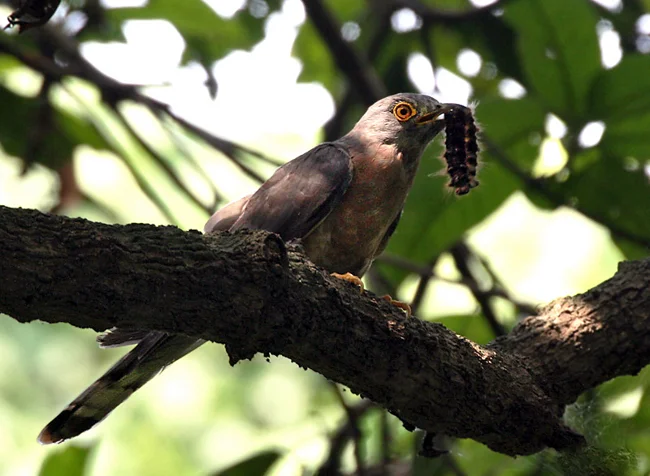
I like it spicy!
And throwing eggs into other people's nests is extremely profitable. Ordinary birds of this size are capable of raising no more than 5 chicks. While a cuckoo is capable of producing all 10 in a season! A cuckoo never abandons its baby to its fate. It chooses a foster family long before it finds a partner and lays eggs with him. For the most discreet adoption, the female often drags away someone else's egg: throws it away or eats it. So that the number before and after the substitution is the same. If a suitable clutch is already heavily incubated and the chicks are about to hatch, the cuckoo can destroy it all, provoking future nannies to do it again. Then she will throw her egg there. 
I'm only here for 20 seconds, I'll leave a present!
Only in one case does a bird abandon its child to its fate. At the moment when the egg is about to appear, and the nest in which the cuckoo planned to give it turns out to be ruined. In this case, the bird puts the chick to whoever it can. For an unlucky mother, this is sad - the egg may not be like it! 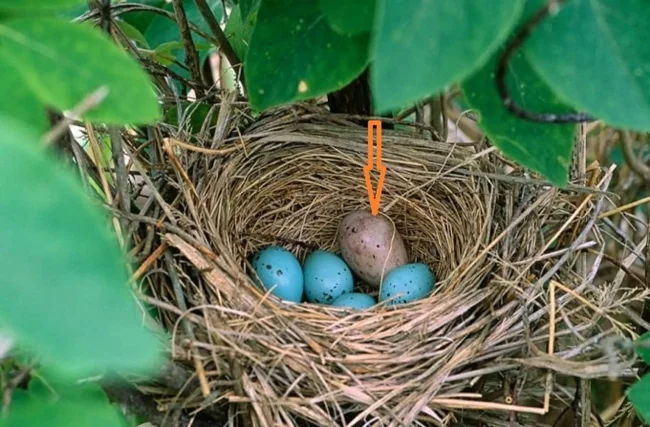
In this scenario, finding a changeling will not be difficult.
More colorful than Easter eggs
It is difficult to say what a real cuckoo egg looks like. Remember that there are more than 300 species of nannies for their chicks? Well, their eggs are all very different! So that the foster parents do not notice the substitution, the cuckoo population is divided into clans. Each of them has eggs similar to the species to which they put their child. Cuckoos imitate shape, color and even size - the more similar the egg, the higher the chance that the bird parent will not notice anything suspicious. 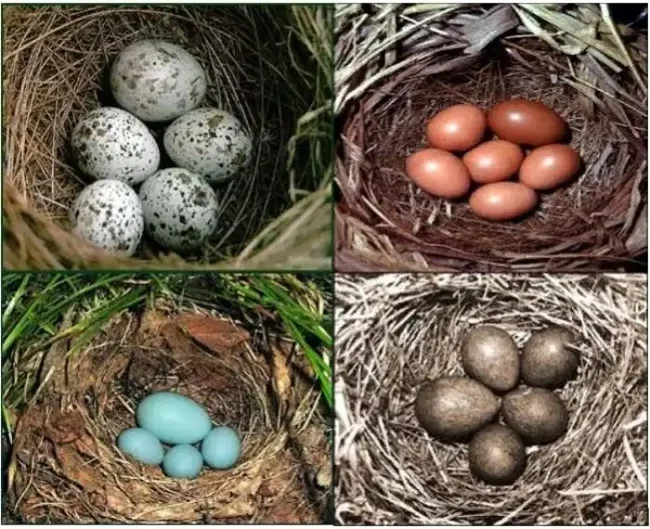
The level of color matching is jewelry! Find the cuckoo egg in each clutch in the photo.
Females do not cry "cuckoo"
So, the house has been found, the parents have been chosen. But how to drive them off the nest to make a new family member happy? Chirp at the top of your cuckoo throat! You won't scare anyone with the standard cuckoo. Only males use it to attract the attention of lovely ladies. That's why mother cuckoos emit a piercing cry, reminiscent of the cry of birds of prey - "kya". Frightened, the future nannies fly off the nest for a couple of minutes. For a cuckoo, this is quite enough: she will have time to lay her own egg and destroy someone else's. 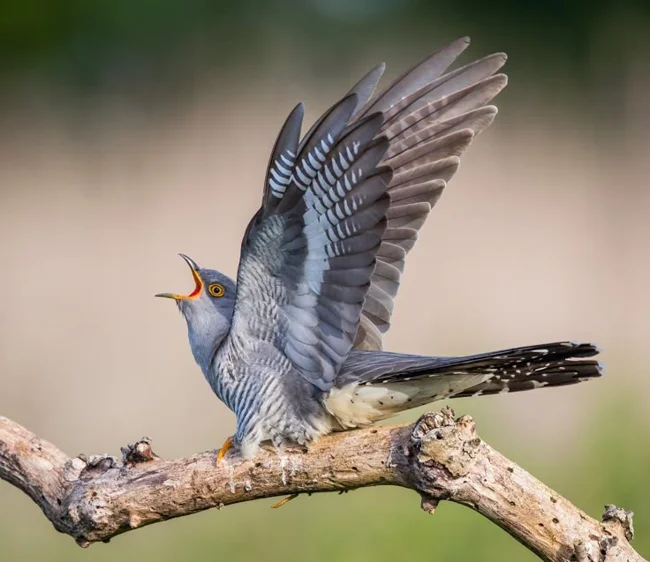
I'm a cuckoo to you. But in my soul I'm a noble eagle!
The cuckoo chick gets rid of all its foster brothers and sisters
The apple doesn't fall far from the tree - dirty methods are used not only by adult birds, but also by their babies. The incubation period of the cuckoo chick is shorter than that of its foster brothers and sisters. Having hatched, the chick has only one desire. To destroy everyone around! 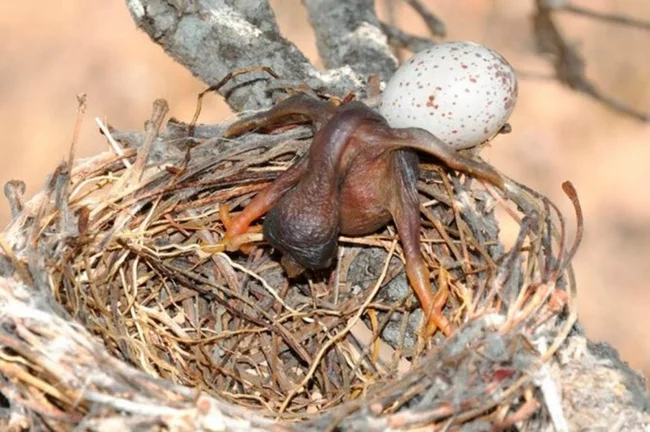
Don't worry, I'll eat everything your parents bring for both of us!
It has a special place on its back, touching which activates the instinct "kick out everything that's lying around". As soon as the cuckoo chick feels a touch to this area of skin, it crawls under the source of these very sensations, rests its paws on the bottom of the nest and begins to uncontrollably push the egg or chick to the edge. And it does this until this very area on the back is free of the irritant. 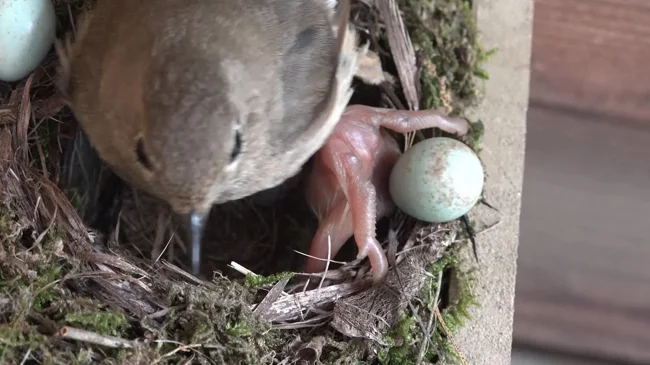
The cuckoo chick is not even embarrassed by the adult bird nearby. And the owner of the nest himself is the parent of the year!
There are two reasons for such cruelty in the baby. Firstly, one cuckoo chick needs as much food as the entire brood. It is 3-4 times larger than its foster parents! Research shows that if a chick does not get rid of competitors, it will grow up to be 20% smaller than those who got rid of all their foster siblings. Secondly, the older the cuckoo chick gets, the more questions the foster parents will have. And the higher the chance that the couple will abandon the changeling, throwing it out of the nest. 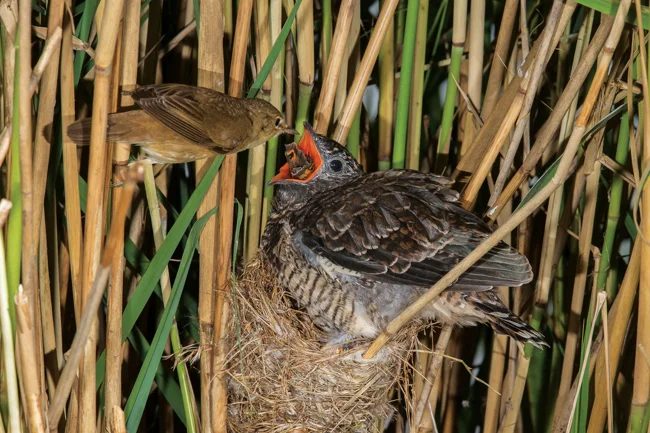
Look, this horse has grown bigger than the nest. And he still won't stop!
Add your comment
You might be interested in:






